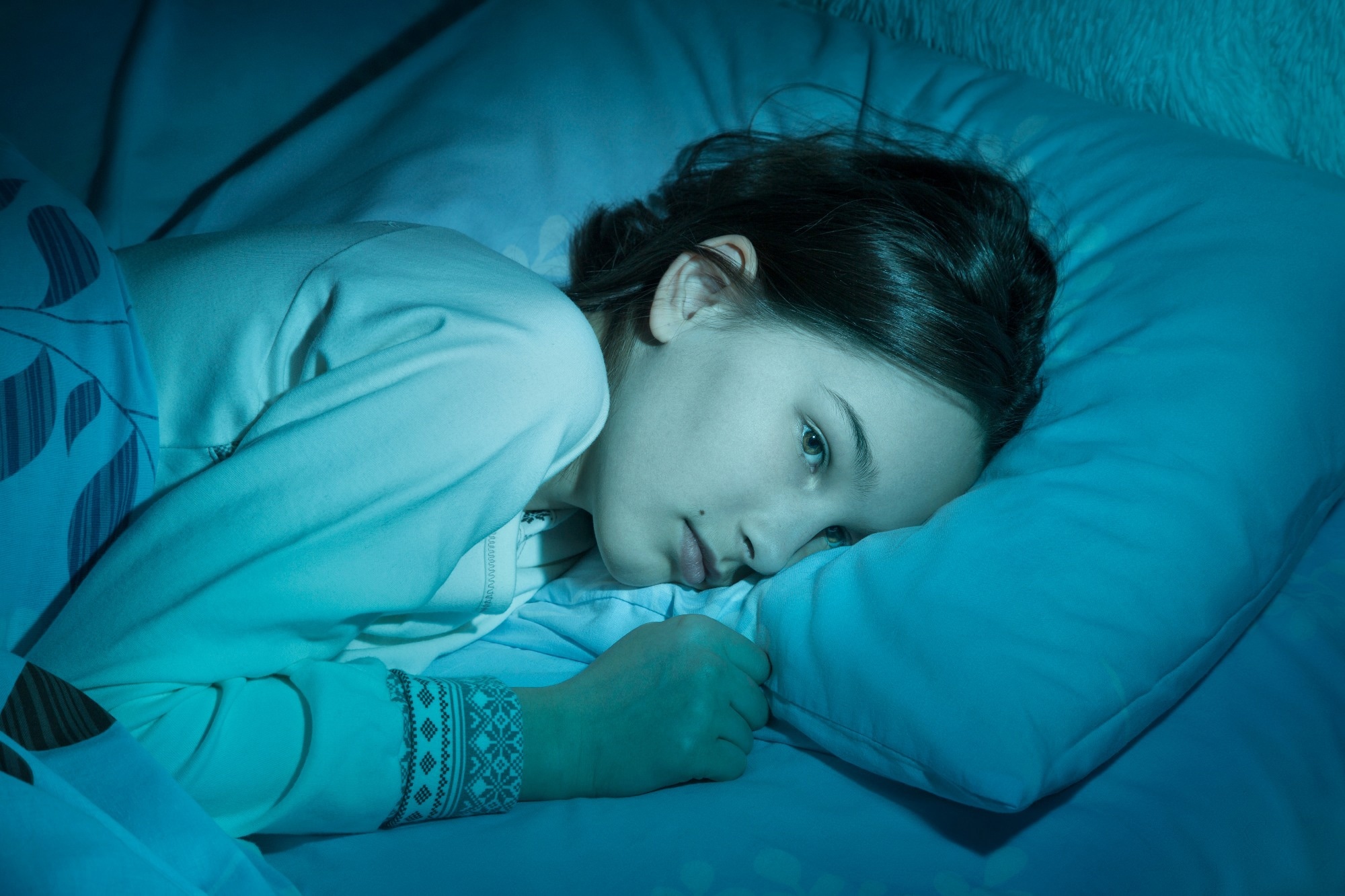Think afternoon sunlight helps teens wind down at night? New research shows it can actually disrupt their melatonin and delay sleep, suggesting school schedules, not just screen time, may be the key to better rest.
 Study: Afternoon to early evening bright light exposure reduces later melatonin production in adolescents. Image Credit: StasyKID / Shutterstock
Study: Afternoon to early evening bright light exposure reduces later melatonin production in adolescents. Image Credit: StasyKID / Shutterstock
In a recent article published in the journal npj Biological Timing and Sleep, researchers investigated whether exposure to moderate or bright light from the afternoon to early evening (AEE) could reduce the impact of evening light on suppression of melatonin in Swiss adolescents.
Their findings indicate that exposure to bright light during AEE resulted in lower levels of melatonin during subsequent evening light exposure, with a 21-minute delay in melatonin onset, suggesting a potential acute phase-delaying effect on circadian rhythms, combined with increased alertness.
Background
Adolescents are particularly prone to chronic sleep deprivation, with over half of 14–17-year-olds getting less sleep than recommended. This shortfall, often caused by early school schedules and delayed bedtimes, can negatively affect mental health, behavior, and cognitive performance.
A biological delay in circadian timing during puberty contributes to later sleep onset, a tendency amplified by increased nighttime autonomy and exposure to stimulating activities and light. Since light regulates the body's internal clock, poorly timed light, especially in the evening, can suppress melatonin, delay circadian rhythms, and increase alertness.
Morning light exposure is known to help advance circadian timing, but many adolescents miss this opportunity due to school schedules. Meanwhile, evening exposure to artificial light or screens can worsen sleep problems.
Restricting evening light use is often impractical for adolescents, prompting interest in alternative strategies to manage sleep. Recent research in adults suggests that exposure to bright light earlier in the day might reduce the sensitivity to light later at night, potentially buffering the negative effects of evening light exposure.
However, little is known about how such effects play out in adolescents, particularly regarding the timing and intensity of prior light exposure. This study addresses that gap by testing whether different levels of AEE light can alter physiological responses to later evening light in adolescents.
About the Study
This study involved 22 healthy German-speaking adolescents between 14 and 17 and was conducted in Basel, Switzerland.
Each participant completed three lab sessions under different light conditions, dim, moderate, and bright, scheduled in a counterbalanced order with at least one week between sessions.
Prior to each session, participants followed a five-day sleep-wake stabilization routine monitored via wrist actimetry and sleep diaries. Each laboratory session lasted 18.5 hours, during which participants were exposed to controlled lighting.
Saliva samples were collected to assess melatonin levels before and after exposure to light. Additional measures included subjective sleepiness, vigilant attention, skin and room temperatures through a distal-to-proximal skin temperature gradient (DPG), and activity logs.
Bright light exposure history was also tracked using wrist-worn sensors during the pre-lab days.
Statistical analysis involved the use of linear mixed models to assess the effects of light conditions on outcomes, including melatonin suppression, sleepiness, and body temperature regulation, while controlling for time, light history, chronotype, and age.
Key Findings
The study investigated how different levels of AEE light exposure influenced adolescents’ physiological and behavioral responses to later evening light.
- Bright AEE light exposure significantly reduced evening melatonin levels compared to dim light, while moderate light showed a non-significant reduction trend in the same direction (β = -7.37, p = 0.114).
- Bright AEE light also delayed melatonin onset by approximately 21 minutes, indicating an acute phase delay that may override potential protective adaptations.
- Notably, greater overall bright light exposure (more than 1000 lux) in the 32 hours before the lab session was associated with higher melatonin levels and earlier onset in the evening, indicating an adaptive effect of daytime light history.
Subjective sleepiness during the later evening light exposure did not differ significantly between light conditions. However, during the AEE light period itself, both moderate and bright light reduced sleepiness compared to dim light. Bright light also slowed the increase in sleepiness over time.
Vigilant attention, measured by response speed in a psychomotor task, showed no significant changes due to AEE light exposure, either during the intervention or the later evening period.
For DPG, bright AEE light increased DPG both during and after exposure, whereas moderate light reduced it, suggesting opposing thermoregulatory responses. These effects were confounded by higher room temperature during the bright light condition. Bright light history did not significantly affect DPG.
Conclusions
This study explored whether AEE light exposure could help adolescents resist the alerting effects of evening light. Contrary to expectations, bright AEE light reduced later evening melatonin levels and delayed melatonin onset, potentially due to an acute phase-delaying effect that overrides adaptive responses.
While it temporarily increased alertness, it did not improve reaction times. Notably, adolescents' prior-day exposure to bright light was linked to earlier melatonin onset and higher evening melatonin levels, indicating that long-term light history may support circadian alignment.
Although the study was limited by a small, homogeneous sample, lack of a dim evening condition, and room temperature confounds, it had several strengths: precise lab control, real-world lighting conditions, and high-resolution melatonin sampling. The within-subject design and careful monitoring of light history enhanced the reliability of the data.
These findings highlight the complex role of light timing and history on adolescent circadian physiology. Afternoon bright light up to three hours before bedtime may be inappropriate for mitigating evening light effects. Policy changes, such as delaying school start times, are emphasized by the authors as potentially more effective solutions for improving adolescent sleep health.
Journal reference:
- Afternoon to early evening bright light exposure reduces later melatonin production in adolescents. Lazar, R., Fazlali, F., Dourte, M., Epple, C., Stefani, O., Spitschan, M., Cajochen, C. npj Biological Timing and Sleep (2025). DOI: 10.1038/s44323-025-00040-6, https://www.nature.com/articles/s44323-025-00040-6